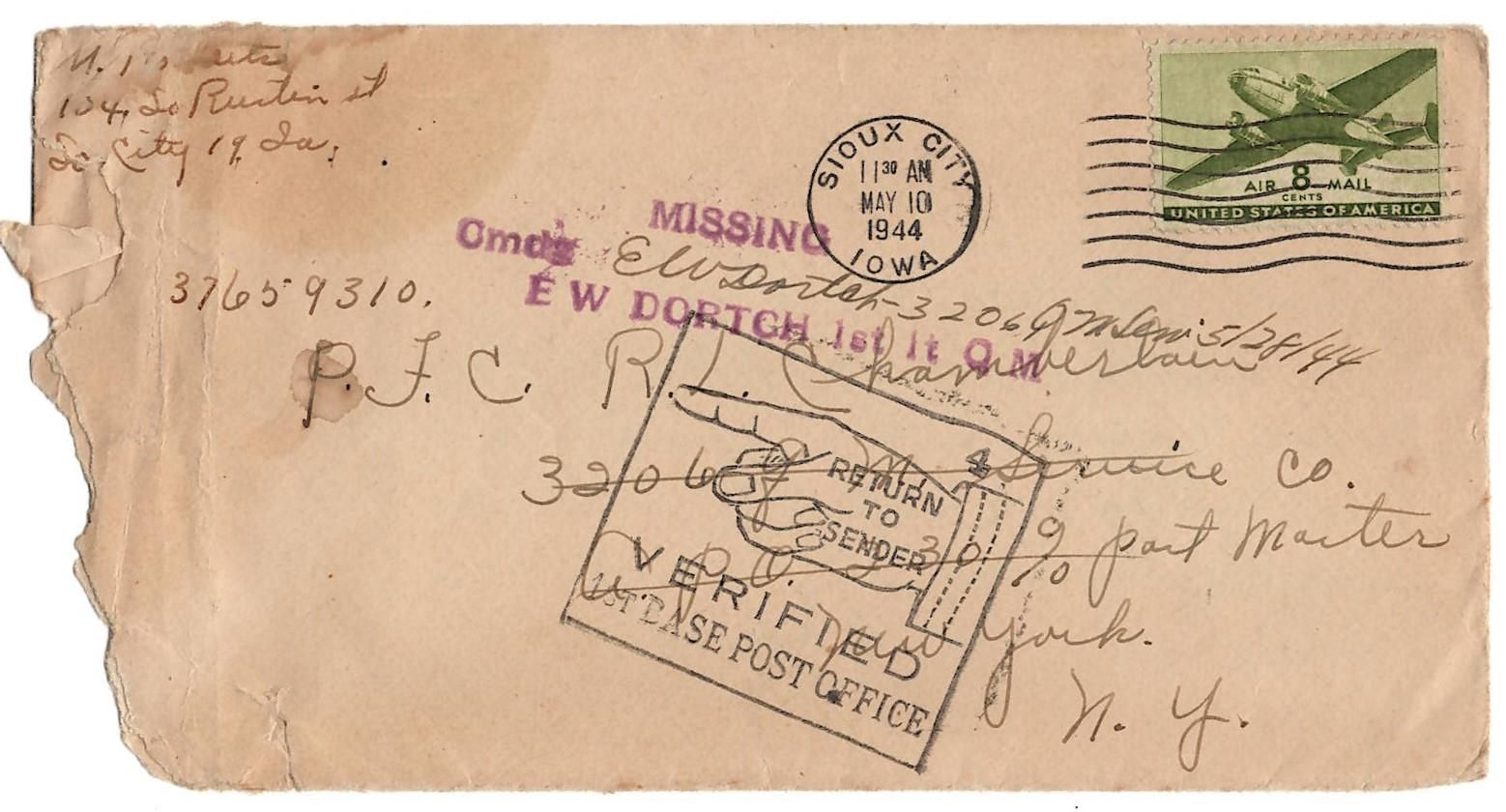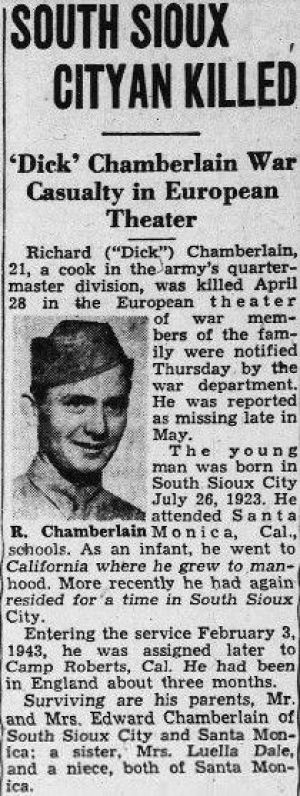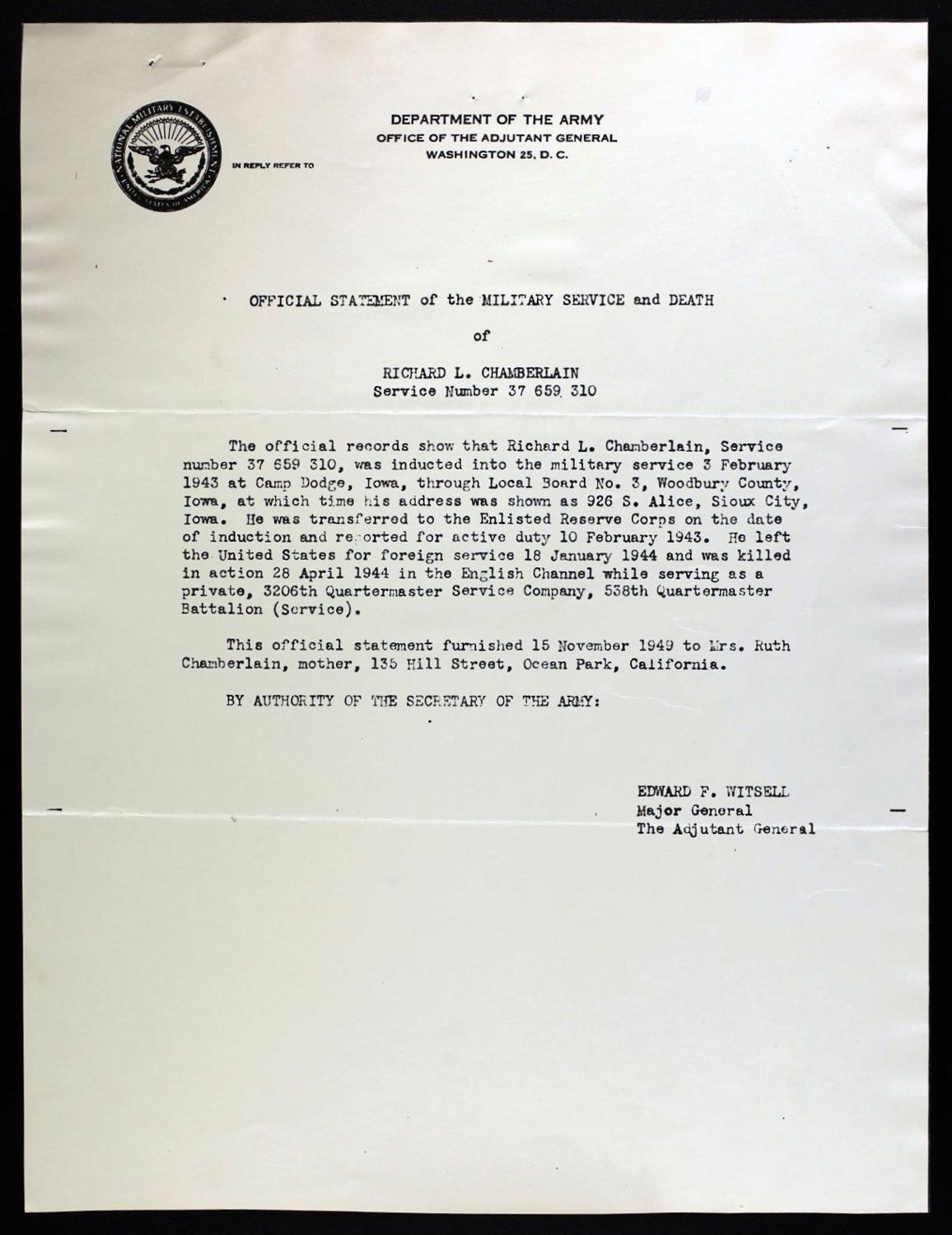Pfc. Richard Lee Chamberlain
and Exercise Tiger


This must have been affecting Dick, because he decided sometime between April of 1940 and the summer of 1941 to move back to Iowa and live with his father, who by that time had married Bertha. We know this because a newspaper article announced a “Chamberlain Family Reunion” that took place August 3, 1941, in South Sioux City, Nebraska. Among the family members present, Edward, Bertha and Dick Chamberlain are listed as attending.3 Edward worked as a butcher for Swift, a meat packing company, and Richard worked at the “stockyards”, probably the same company.
After Pearl Harbor in December 1941, the country was at war. On 30 June 1942, just less than a month before his 18th birthday, Richard registered for the draft.4 He is described as 5’8” tall, 148 lbs., with blue eyes and light brown hair.
Richard enlisted in the U.S. Army on 3 February 1943, age 19, and reported for duty on 10 February 1943 at Camp Dodge Herrold. The document doesn’t say what unit he was put in, but it was obviously the 3206th Quarter Master Service Company of the 538th Quarter Master Battalion (Service). The unit shipped out on 28 January 1944 for England.
Of course, we know what happened to Pfc. Richard Lee Chamberlain in the early hours of April 28, 1944. He was aboard LST 531 when it was hit by two torpedoes from a German E-boat. According to the book Exercise Tiger by Nigel Lewis, LST 531 erupted in a huge explosion and sank in only six minutes’ time. The soldiers and the crew on board were sitting ducks and didn’t stand a chance. The 3206th Quarter Master Service Company was basically wiped out as a unit. Dick Chamberlain’s body was never recovered, or if it was, his remains are in an unmarked grave. Dick was 20 years old when he gave his life for our country and the Allied cause.
In May 1947, the Iowa Legislature approved bonus payments of up to $500 for men and women who served on active duty in the U.S. armed forces between 16 September 1940 and 2 September 1945. To qualify, applicants had to be legal residents of Iowa for at least six months prior to their service. Bonus applications were either filled out by veterans or their beneficiaries. If the claim was filed by a beneficiary, the beneficiary was also required to provide documentation that they were the next of kin of the deceased and were entitled to his or her bonus.5
According to one of the documents in Richard’s Iowa Bonus Case File, his mother Ruth was given an “Official Statement of the Military Service and Death” of her son on 15 November 1949. It provides some detail, but not enough. From other papers in the file, it appears Ruth applied for a bonus for the loss of her son on 17 January 1950. There wasn’t enough documentation to prove Richard’s residence in Iowa, so on 4 April 1950, Ruth submitted the names of more persons who could prove he was there. This time her application was accepted, and it looks like she received a check for $500 for the loss of her son in November 1950.6
There is no indication that Richard’s father Edward Chamberlain received any compensation.
1 1930 Federal Census.
2 1940 Federal Census, Sioux City, IA.
3 The Homer Star, Homer, Neb., Pg. 1, 8 August 1941.
4 Selective Service Registration Card for Richard Lee Chamberlain.
5 Iowa Bonus Case File, No. 308709.
6 Date stamp atop page showing the payment amount on original application. Uncertainty about the date is because there were documents dated in April and June of 1950 to show the matter was still being decided.


